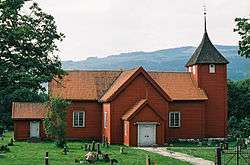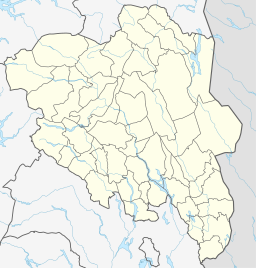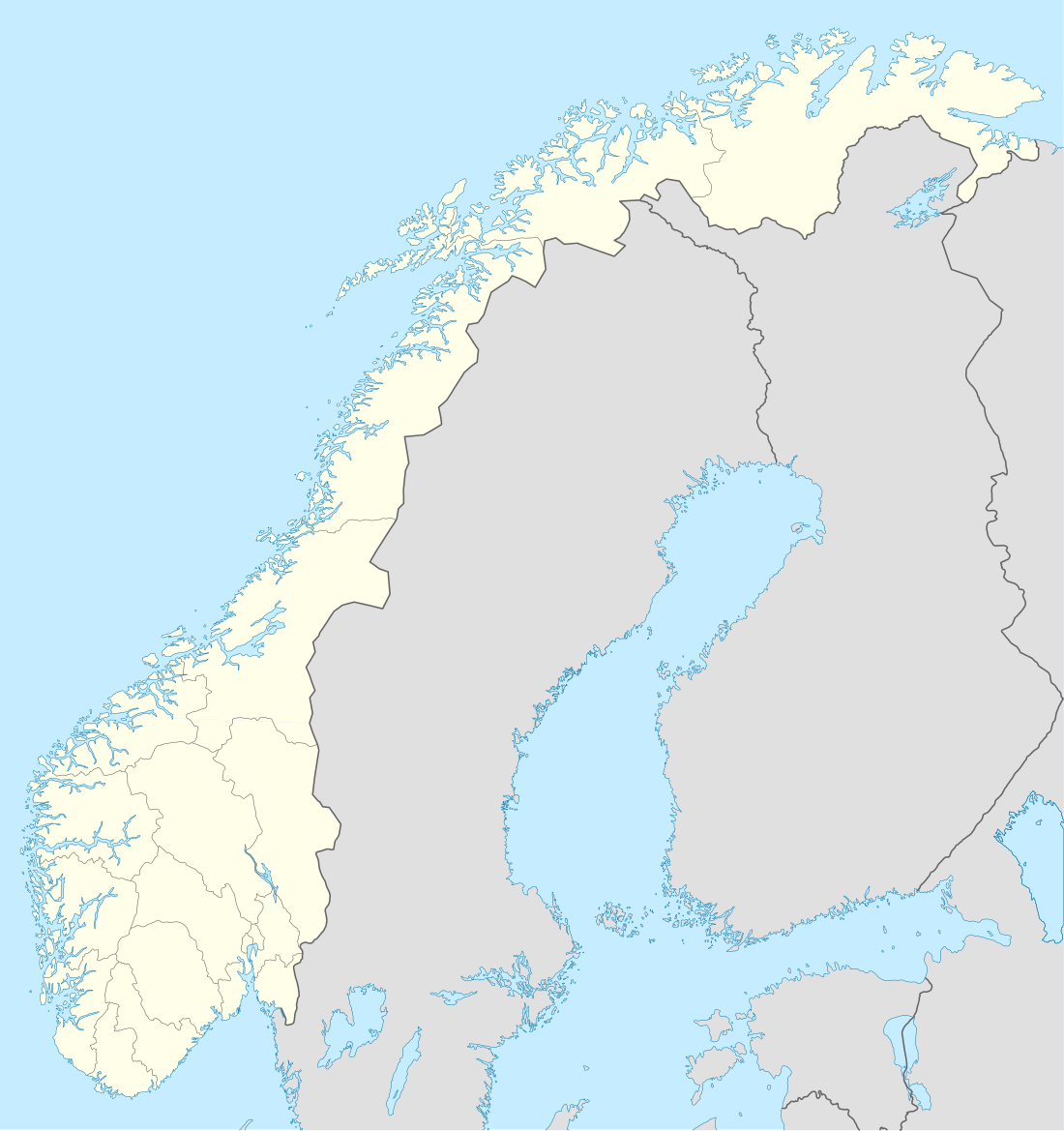Fåberg Church
Fåberg Church (Norwegian: Fåberg kirke) is a cruciform church in the village of Fåberg in the municipality of Lillehammer in Innlandet county, Norway.[1][2]
| Fåberg Church | |
|---|---|
Fåberg kirke | |
 | |
 Fåberg Church Location in Innlandet  Fåberg Church Fåberg Church (Norway) | |
| Location | Fåberg |
| Country | Norway |
| Denomination | Church of Norway |
| Churchmanship | Evangelical Lutheran |
| History | |
| Status | Parish church |
| Architecture | |
| Functional status | Active |
| Architect(s) | Svend Tråseth |
| Completed | 1727 |
| Specifications | |
| Capacity | 292[1] |
| Materials | Wood |
| Administration | |
| Deanery | Sør-Gudbrandsdal |
The church is a timber-framed structure and can accommodate 292 people.[1] It is a cruciform church, like most of the churches that were built in the 18th century in the Gudbrand Valley, inspired by the cathedral in Oslo. Fåberg Church is the only one of these churches with its tower on the west end; the others have a central tower. It is believed that the local architect Svend Tråseth designed the church.[1] He later built several churches in the Gudbrand Valley and Valdres.
The church was renovated in the 1800s by simplifying the interior and painting the walls white.[3] During restoration in 1956 the church was returned to its old style. The baptismal font carved from soapstone dates from the 1100s.[3]
The altar has a painting by the Fåberg artist Ole Larsen Smerud. Smerud studied painting in Copenhagen, where he worked as a court painter and heraldic artist.[4] Smerud's painting of Jesus on the cross was a gift to the church in 1810.[3]
Two doors from the old Fåberg Stave Church are preserved at the Museum of Cultural History in Oslo. A medieval crucifix from the stave church is on display at Maihaugen. The old alms box from the church, dating from 1668, is now in Garmo Stave Church at Maihaugen.
Next to the church stands the Fåberg stone, a runestone believed to have been one of three monoliths standing near the church.[5]
The church can be reached via Norwegian County Road 255.[3]
Fåberg Parish
Fåberg Parish was also called Fogaberg, Faberg, Foberg, Fauberg and Faaberg as early as 1300[6]
Fåberg Parish was converted to Fåberg Municipality on January 1, 1838 in the Formannskapsdistrikt. It was merged into Lillehammer municipality on January 1, 1964. The database for Norske Gaardnavne lists Gårdsnummer 99-188 for Fåberg Parish in Fåberg municipality. The Matrikkelutkastet av 1950 lists Gårdsnummer 1-191 as part of Fåberg because Fåberg municipality included all of Lillehammer municipality at that time. The records after 1964 list Gårdsnummer 1-191 as part of Lillehammmer Municipality instead of Fåberg because of the 1964 change.
The online parish records start in 1727 for Fåberg Prestegjeld and in 1901 for Lillehammer Prestegjeld at Digitalarkivet. The attached KML file shows the church location and the farm locations in Gnr/Bnr format.
References
- "Fåberg kirke". Kirkesøk. Archived from the original on 1 December 2017. Retrieved 23 November 2017.
- "Fåberg kirke". Norsk kirkebygg. Archived from the original on 15 May 2018. Retrieved 23 November 2017.
- "Fåberg kirke". Norske kirker. Archived from the original on 1 December 2017. Retrieved 24 November 2017.
- Stagg, Frank Noel (1956). East Norway and Its Frontier: A History of Oslo and Its Uplands. London: Allen & Unwin. p. 236.
- Birkeli, Fridtjov (1973). Norske steinkors i tidlig middelalder: et bidrag til belysning av overgangen fra norrøn religion til kristendom. Oslo: Universitetsforlaget. p. 218.
- Norske Gaardnavne Vol. 4-1 p 211 pub. 1900 by Oluf Rygh in Google Books
Further reading
- Rasmussen, Alf Henry, ed. 1993. Fåberg kirke. In: Våre kirker. Norsk kirkeleksikon, p. 602. Kirkenær: Vanebo forlag. ISBN 82-7527-022-7.